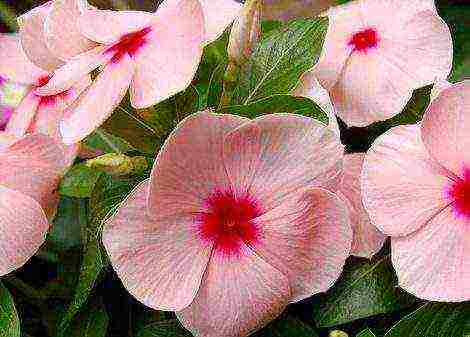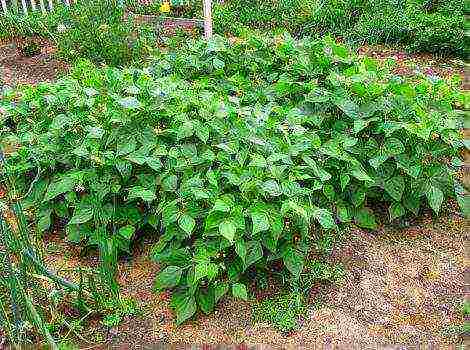Content [show]
Growing a real crystal is quite simple, interesting and educational. This article talks about how to do it at home.
Crystals are formed from any substance whose atoms and molecules are grouped into an ordered structure. You don't need a laboratory or special equipment to grow them. The simplest reagents that are always at hand will do.

Crystal growing is one of the easiest and safest chemical experiments available at home. Even a child of primary school age under the supervision of adults can carry it out.
The reward for your efforts will be an object of extraordinary beauty that you create with your own hands.
Crystal types
- A monocrystal is a one-piece large crystal, such as an artificial stone. It is formed under the condition that the crystallization processes are extremely slow.
- A polycrystal is formed when crystallization is rapid. In this case, many tiny crystals are formed. This is how metals behave.
Ways to grow crystals at home
One of the easiest ways to grow a crystal is to cool a saturated solution. What are the processes taking place at the same time?
- In warm water, the substance chosen for the experiment (for example, salt) dissolves completely.
- The temperature of the solution is lowered: this reduces the solubility of the salt. An undissolved salt is formed which precipitates.
- Sediment formation begins with the formation of small grains both in the solution itself and on the surface of the container in which it is placed.
- If there are no foreign inclusions in the solution (ordinary dust grains, villi, etc.), and cooling occurs gradually, these grains-crystals grow together into larger and more regular crystals.
- Rapid cooling causes the formation of many tiny crystals of irregular shape at once, which do not connect to each other and inhibit the growth of each other.
The crystal will also grow if the solvent (water) is gradually removed from the saturated solution. How to do this and what will happen in the vessel?
- Cookware with a saturated solution must be kept at a constant temperature for a long time.
- It is necessary to exclude the ingress of litter and dust, and also to slow down the evaporation of water (for this, it is enough to cover the container with paper).
- The crystal can be grown on some kind of suspension in the middle of the container (then it will acquire the correct shape), or at the bottom of the container.
- If the crystal grows at the bottom, it must be rotated periodically to achieve symmetry.
- In place of the evaporated water, add a solution of the same consistency as at the beginning of the experiment.
The basic principle in this case remains the same: the slower the processes affecting crystallization, the more beautiful, larger and more correct the crystals will be. If the original crystal, which served as the basis for growing, had an irregular shape, it will supplement the missing parts during growth and assume a configuration typical of the nature of its substance.So copper sulfate will eventually grow into a rhombus, and the salts of chromopotassium alum will form an octahedron.
It is believed that only a small crystal can grow at home from improvised means. This is not so: with due care, there is every chance to grow a crystal of any size and weight at home. In fact, for this it is enough to continue the crystallization procedure until the desired result is achieved. Of course, it is necessary to immediately select a container that is suitable in size.
Preservation of crystals
Failure to comply with storage conditions can lead to destruction of the crystal. It is necessary to familiarize yourself with the characteristics of the selected substance in advance in order to avoid disappointment at the end of such a long and painstaking work.
For example, the chiseled edges of the alum crystal under the influence of ordinary dry air will fade due to the loss of moisture and crumble, forming a gray powder. The same will happen with sodium sulfate and thiosulfate, salts of manganese, zinc, nickel, Rochelle salt. The only way out is to place the crystals in sealed transparent vessels. Some recommend covering the crystals with a clear varnish, but this only delays the time of death. And also - the lacquered edges lose their original shine and look artificial.
The high temperature destroys crystals grown from copper sulfate and potassium alum. The life of such crystals can be extended by storage in a household refrigerator. However, even here they will hold out for about 2 years.
Another problem of crystals of water-soluble substances is that they are destroyed by temperature changes due to moisture, which is retained in a small amount inside them. For this reason, spots and chips appear, the edges are sagging, and the gloss is lost.
Perhaps the most stable of the substances popular for growing crystals is table salt.
What crystal can be grown from
In addition to the above substances, crystals at home can be grown from sugar.
It is much more difficult, but at the same time more interesting to grow artificial stones (amethysts, quartzites, rubies, etc.). This is a rather laborious process that requires special equipment to maintain a constant temperature, pressure, humidity and other parameters important for the success of the experiment. In other words, to get an artificial stone, you need a real laboratory.
What should be the substance for growing a crystal at home?
- Safe, non-toxic. Not all substances with a crystalline structure meet this requirement. For example, potassium cyanide KCN (or sodium sulfide Na2S) also forms crystals of its characteristic shape. But it is impossible to carry out experiments with it at home, because it enters into an oxidation reaction with oxygen in the air and releases toxic substances that are dangerous to humans.
- The second important quality is stability. That is, the selected substance must enter into a reversible reaction with water. In addition, resistance to temperature fluctuations is important. Some organic matter can be irreversibly destroyed when it gets into hot water (hydrolysis reaction).
- The cost of reagents. As you know, the first experiment (or several) may not be very successful, therefore, for a start, it is better to opt for inexpensive and affordable substances.
- Yes, growing crystals will require a lot of purified water - this should also be taken care of in advance.
- The ability to dissolve in water. Before starting the experiment, you should find out how much the selected substance is required for a given volume of water. To grow a sugar crystal, for example, you need to dissolve at least 2 kg of sugar in 1 liter of water. So it is better to first draw up a graph of the solubility of the starting material. To do this, subtract the mass of the same volume of the filtered solution from the mass of a glass of water after the dissolution is over and the temperature stabilizes.This will help you get an idea of how much substance for crystallization is needed for a given volume of water.
How to grow a crystal of table salt
The easiest way to practice is with regular table salt. Then you will not need special chemical reagents, only salt and purified water.
Step 1. Prepare a crystal of salt by tying it with a thin thread fixed in the middle of a small stick (pencil, pen).
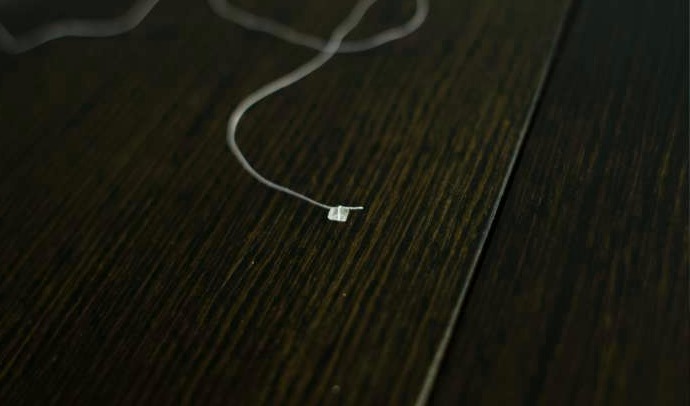 Salt crystal
Salt crystal
Purpose: to place the crystal so that it is immersed in the solution, but does not come into contact with the surface of the vessel.
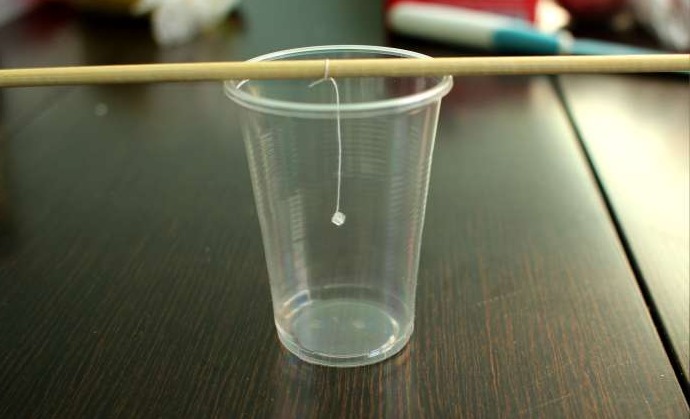 Tie a crystal of salt to a thread and place it in a glass
Tie a crystal of salt to a thread and place it in a glass
Step 2. Pour warm water into a container (transparent so that you can observe the growth of the crystal) and add salt. Stir until the salt is completely dissolved. Then add salt and repeat. It is necessary to salt the water until the salt stops dissolving. This is noticeable by the appearance of sediment at the bottom of the vessel.
Step 3. The solution must be gradually heated by placing it in a container with a larger diameter with hot water. As a result, the precipitate will dissolve. If there is something left at the bottom, it is better to pour the solution into a clean container.
Step 4. Place the container with the resulting solution in a place with a stable temperature. Immerse the crystal-nucleus on a thread into the solution. From above, the vessel with the solution must be covered with paper.
 We immerse the crystal-germ on a thread in a solution
We immerse the crystal-germ on a thread in a solution
Step 5. The crystallization process has started. Then, when the water evaporates, it will be necessary to add a solution of the same salt content to the container as it was at the beginning of the experiment. After a while, it will become noticeable that the original crystal has increased in size. You can grow it as much as you like, as long as the size of the container and patience are enough. The resulting crystal will be fairly durable.
How to grow a sugar crystal
Sugar crystals can be used as table decoration or candy canes for children. But they are quite expensive due to the high consumption of sugar. For 2 glasses of water, you will eventually need 5 glasses of granulated sugar.
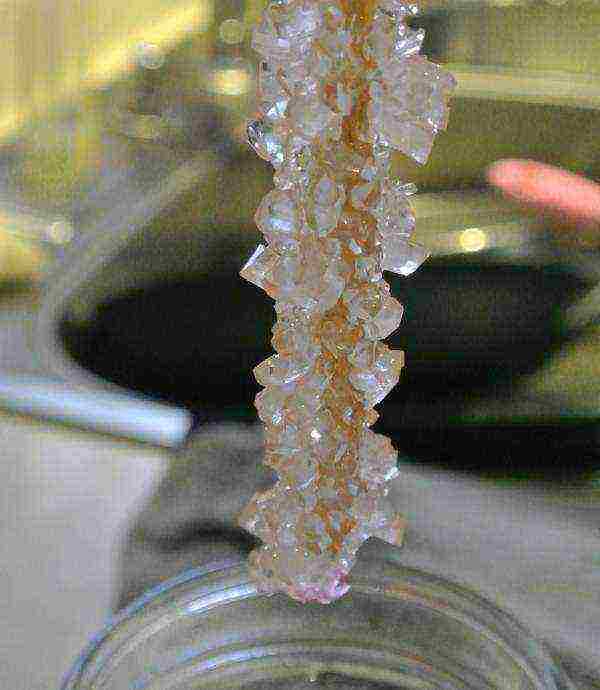 Sugar crystals
Sugar crystals
The process for preparing a solution is similar to how it is done for salt crystals. It is most convenient to grow sugar crystals with toothpicks or wooden skewers. To "seed" it is enough to dip a skewer in syrup and dip in sugar so that it adheres evenly to the surface. You need to wait a while for the sugar to stick well and dry.
To form colored crystals, it is worth adding food coloring to the syrup (the best option is juices).
It takes 1 week to grow a sugar crystal from the specified amount of ingredients.
Sugar crystals on sticks (Video)
This video shows you how to grow edible crystals from sugar that are not only beautiful to look at, but also delicious.
How to grow a copper sulfate crystal
Salt crystals are transparent white, while copper sulfate gives a deep blue hue.
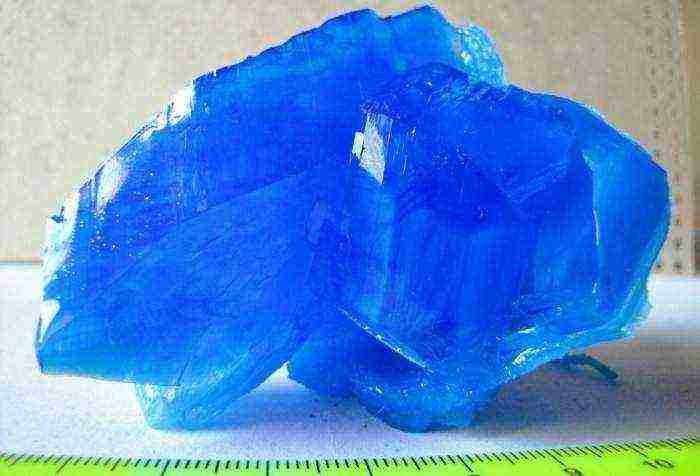 Copper sulfate crystal
Copper sulfate crystal
Growing such a crystal is no more difficult than growing a salt one: you need a saturated solution and a crystal-nucleus on a thread.
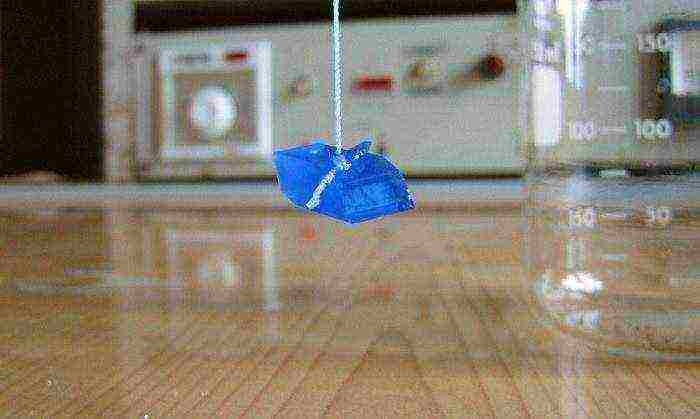 A crystal of copper sulphate hanging on a string
A crystal of copper sulphate hanging on a string
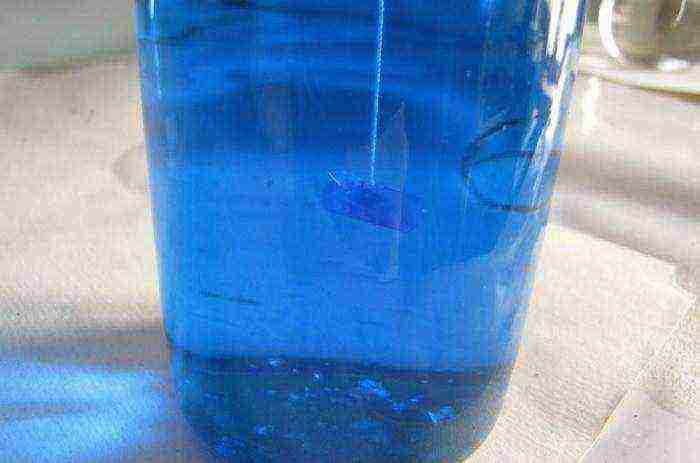 In a saturated solution of copper sulfate on a thread, lower the seed
In a saturated solution of copper sulfate on a thread, lower the seed
The solution in a transparent container should be placed in a shaded place with a stable temperature, the crystal should be suspended in the same way as in the case of salt, and wait, periodically adding the solution instead of the evaporated one.
 42 day experiment
42 day experiment
The crystal must not be removed from the working solution until the procedure for its formation is completed!
Safety engineering
You cannot use food utensils to grow crystals (with the exception of experiments with salt and sugar). You should not leave food nearby: firstly, because the reagents are toxic, and secondly, because of litter and crumbs, which, if they get into the solution, will ruin the experiment.
When handling chemical reagents, absolutely all the rules indicated on the package should be observed.After finishing work, you need to wash your hands.
Growing a crystal at home is quite simple, interesting and informative. It's best to practice with the available substances first. If something goes wrong, you need to check that all the conditions necessary for the formation of a crystal are met. Having mastered the simplest crystals, you can start working with other reagents. It never gets boring, because different substances give crystals of different shapes and colors. In addition, there are no two absolutely identical crystals, and their configuration and size can be adjusted at will.
Growing crystals at home is a very long, laborious and painstaking process, but it is very exciting and definitely worth the time spent. Children love this experience, and most of the methods below are completely safe. So, let's take a look at the main ways to grow crystals at home.
How to grow sugar crystal at home
It is best to start your experiments on growing crystals at home with the most interesting and enjoyable ones. The easiest way is to grow a crystal from sugar, and if you do this experiment with children, they will be able to taste the fruits of their creativity at the end of the process.
In order to grow a crystal from sugar, we will need:
- 2 glasses of water;
- 5 cups granulated sugar;
- wooden skewers;
- paper;
- small saucepan;
- several transparent glasses.
The crystal making process begins with making sugar syrup. To do this, take 1/4 cup of water and two tablespoons of sugar. Mix, bring on fire until syrup is obtained. Dip a wooden skewer in syrup and sprinkle with sugar a little. The more evenly the sprinkling of the skewer occurs, the more ideal and beautiful the crystal will be. Similarly, we make the required number of blanks and leave them to dry completely, for example, overnight.
Some time has passed, our skewers have dried up and now we can move on to the next part of the experiment. Pour 2 cups of water into a saucepan and pour 2.5 cups of sugar. Over low heat, stirring constantly, we turn our mixture into sugar syrup. Stirring must be carried out thoroughly until the sugar is completely dissolved! Add the remaining 2.5 cups of sugar and also, until completely dissolved, cook the syrup. After that, leave the syrup to cool slightly, this will take about 15-20 minutes. In the meantime, we continue to prepare blanks from skewers, the basis for our future crystal. We cut paper circles slightly larger than the diameter of our glasses and pierce the resulting circles with chopsticks. The main thing is that the paper is firmly fixed on the skewer. The paper will act as the holder and lid for the glass.
Pour the cooled, but still hot syrup into glasses. At this stage, you can add a little food coloring to the syrup, then the crystal will eventually turn out to be colored. We lower our blank (stick with a circle of paper) into a glass and leave it alone until the crystal ripens. It is important not to touch the walls and bottom! Well, we do the same with all the remaining blanks.
It will take about a week to grow the crystal. This is a very interesting and exciting process that children really like. Every day the crystal grows and takes on its individual shape. Some crystals grow faster, some slower, but the bulk matures in just 7 days. The resulting crystal from sugar is very good for the whole family to use at home tea, or just gnaw in moments of melancholy! So, entertaining chemistry is not only interesting, but also delicious;).
How to grow salt crystal at home
Growing a crystal from salt at home is a fairly simple process, but it requires patience and care. However, the result of the experiment exceeds all expectations. We need:
- pure water;
- pan;
- 2 glass jars;
- salt;
- strong thread.
We heat water in a saucepan, we heat it very much, and do not bring it to a boil, the experiment will not work in boiling water. After heating the water, little by little, we begin to pour salt into it, stirring constantly until the portion of salt is completely dissolved. After that, add more salt, stir until dissolved. And so on until the salt stops dissolving. Pour the resulting saturated saline solution into a jar and let it stand well for a day. The next day we will see many small crystals of settled salt in the bank. We choose the most beautiful and largest of them, carefully take out and tie on a thread. We carefully pour the solution into an empty jar, making sure that the settled crystals do not fall into the new vessel. Then we dip the crystal on the thread into the filtered saline solution and be patient. After 2-3 days, you will notice an increase in the crystal, this growth will continue for some time until the end of growth. After you notice that the crystal has stopped growing, you can either end the experiment if you are happy with the result, or prepare another saturated saline solution, as we did above, and lower our crystal there. By the way, if you often change the salt solution, the crystal growth will be faster.
It is very important not to specially cool the solution and not to shake it, in this case, crystals of an imperfect shape are obtained. Also, do not add any dyes, the crystal will not be colored, and the experiment will be ruined.
How to grow a copper sulfate crystal at home
Growing crystals from copper sulfate at home is already the next level of complexity, in which you need to comply with safety requirements and can only be performed by children under the supervision of adults.
To conduct the experiment, we need:
- water, better distilled;
- glass jar;
- copper salt (copper sulfate or copper sulfate, which can be purchased at a gardening store).
Before buying, be sure to consider the substance, it should be a bright blue homogeneous powder. If there are lumps and green blotches, it is better to refuse the purchase. For summer residents, he will go to the farm, but for us, novice chemists, no.
So, the correct vitriol has been purchased. Pour about 100 grams of powder into a glass jar and fill it with hot water little by little, stirring constantly. We must get a saturated solution in which the copper salt can no longer dissolve. We filter the solution and put it in the refrigerator. The next day, at the bottom, we will find many crystals. We select a couple of the largest and most beautiful ones and place them in a container with a filtered solution. Before that, we act with crystals in the same way as in the previous experiment with table salt, namely, we fix them on a thread and put them in a jar. We cover the vessel with thin paper and be patient. Growing a crystal from copper sulfate takes several weeks. After completing the formation of the crystal, it must be carefully removed, rinsed with cold running water and covered with colorless nail polish.
There are many interesting processes going on in nature. One of them is the creation of rock crystals. But this wonderful process, shrouded in mystery, can be reproduced at home, observing how beautiful minerals gradually grow from the substances we are used to.
The safest ingredient is sugar. It is worth starting with it, especially since such crystals are not only beautiful, but also edible. You need to take:
- 2 glasses of water;
- 3 cups more sugar;
- sticks;
- paper or clothespins;
- capacity;
- glasses;
- food coloring.
Syrup is cooked from 1/4 cup of water and 2 tablespoons of sugar. Then sticks are dipped into it and rolled in a small amount of sugar poured onto a napkin.When they are completely dry, take a container, pour 2 cups of water into it and pour in half the sugar norm. We reduce the fire to a minimum, place the container on the stove, and while stirring, wait for all the sugar to dissolve. Add the rest of the sand and dissolve it. Turn off the burner and let the solution stand for about 20 minutes. Pour the syrup hot into glasses and add food coloring to each dye. We put on the holders on the sticks. When we dip these sticks into hot syrup, the stopper will prevent contact with the sides and bottom of the dishes. In about 7 days, a miracle will happen.
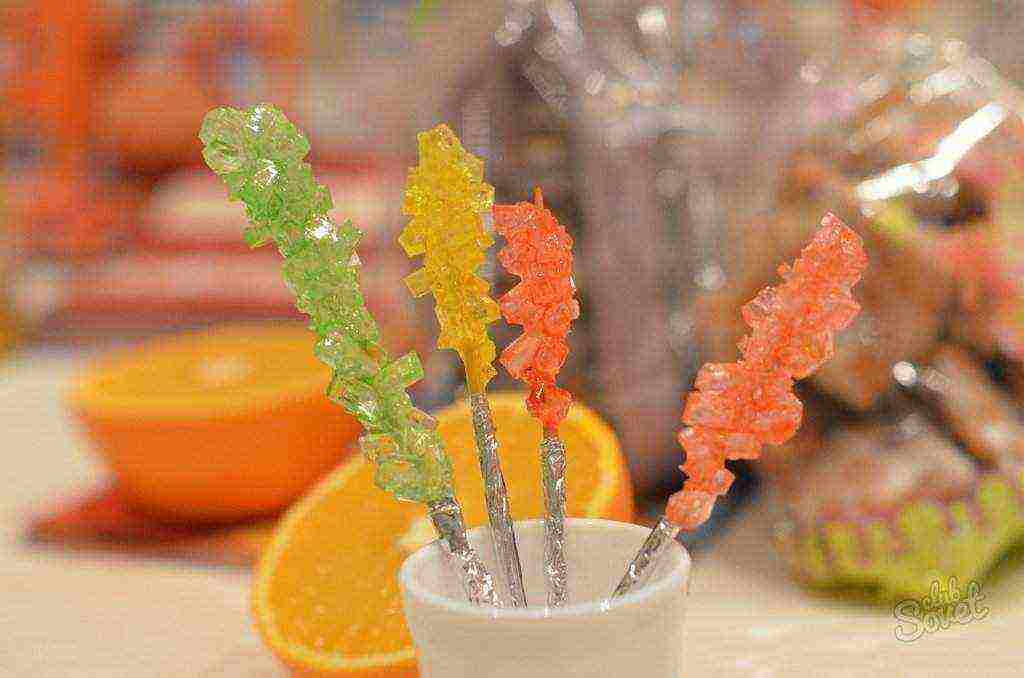
Another 1 available ingredient is NaCl - edible salt. Getting started:
- Pour warm water - 200 ml into a glass.
- Add salt in portions, stirring all the time. We do this until the salt crystals stop dissolving. It will take approximately 70 g. It is important that the salt is pure, otherwise the experience may end with a negative result.
- We take a container with water, put it on fire. We put a glass there, and let it be there until the solution is heated in it. Do not forget to put a cloth or some kind of support on the bottom of the container, otherwise the glass will crack.
- We prepare a simple device consisting of a pencil with a thread tied to it, at the end of which the largest crystal of salt is fixed. If, instead of a crystal, we attach a pebble or a figurine made of copper wire, then in the end we will get a very beautiful sample.
- We take out the glass, pass the solution through filter paper. We put the device on the edges of the glass. The thread with the crystal will sink into a saturated solution. We set aside a dark place for the dishes.
- We observe how the crystal grows. When you decide that it has grown enough, take out and dry, cover with varnish. Handle it with care - it is very fragile.

Very beautiful blue crystals grow from copper sulfate. This material is not as safe as sugar or salt, so work with gloves. The technology is almost the same:
- We take a glass jar and pour water - 300 ml.
- We gradually introduce copper sulfate until the solution is oversaturated.
- We put a pot of water on the stove, put a jar in it and heat it.
- We hang a bead or button on a thread. We tie to a wooden stick.
- We take out the jar, let the solution cool.
- Place the stick with the thread across the hole in the jar. We make sure that the load does not touch the bottom and walls of the vessel.
- We are waiting for the crystal to grow, then we take it out.
- Apply the coating using colorless nail polish.
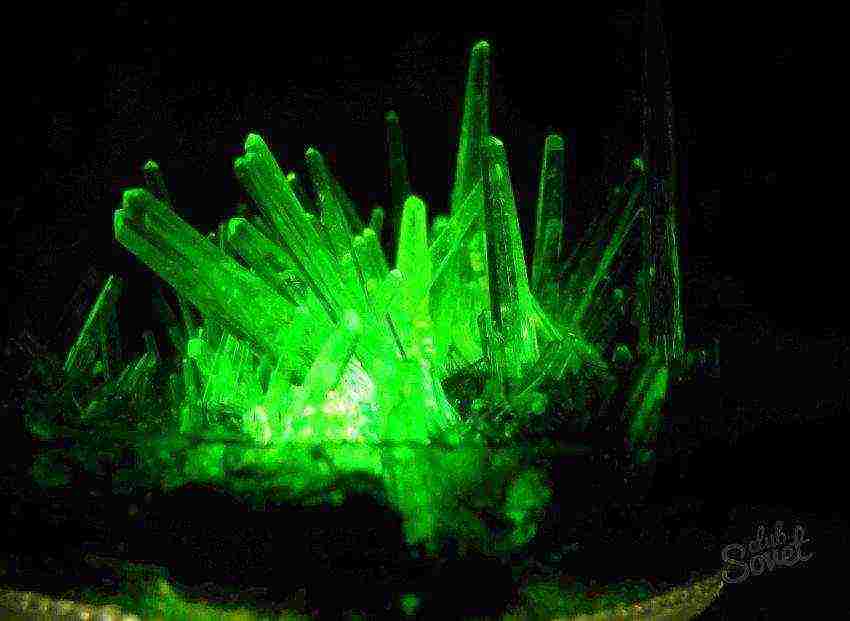
Good crystals grow from potassium alum (alunite). They buy them at the pharmacy. Then:
- dissolved in heated water;
- filtered;
- put in a quiet place, room temperature;
- crystals appear after a few days at the bottom of the dishes;
- choose the best ones, transfer them to another dish and fill them with an old filtered solution;
- repeat this operation after 2-3 days until the required minerals are obtained;
- taken out, blotted with a napkin and varnished.
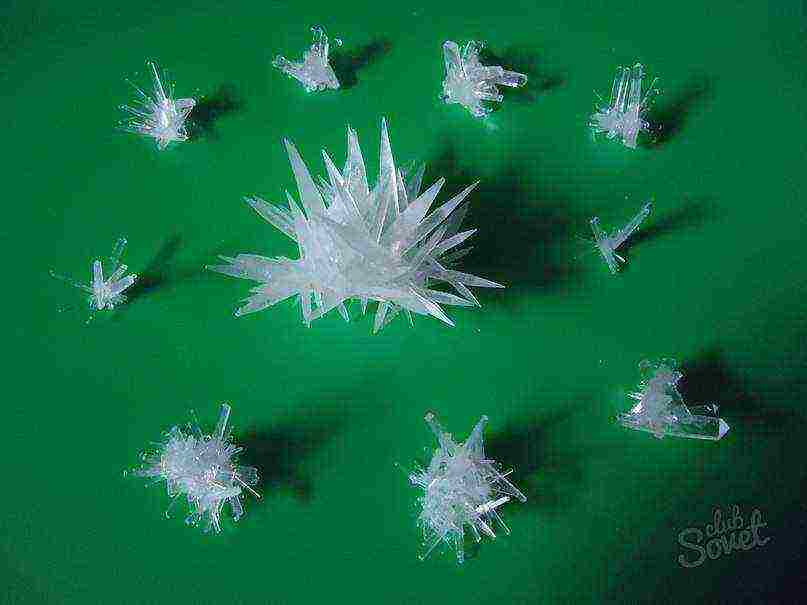
In stores that sell toys, sometimes kits with materials for growing crystals appear. They contain aluminum and potassium sulfates, as well as ammonium phosphate and dyes.

To summarize, growing crystals is a creative, fun process. If you do this together with a child, then who knows, maybe a famous researcher will grow out of him?
Content:
Experiments such as growing a crystal with your own hands will help you feel like a jack of all trades - you will learn how to make beautiful home decorations, sweet candies and help your children learn the basics of chemistry.
Crystals use
Such an idea, how to grow a crystal Is a great opportunity to study the chemical properties of different substances. If you have children at home, be sure to challenge them to grow a crystal at home - not without your help, of course.It will be interesting for the children to observe the progress of work, comprehending chemical science in such a fascinating way.
Some experiments will also help you get decorative details for decorating individual compositions - for example, salt crystals can be excellent decorating materials.

However, it must be remembered that many of the materials used are extremely poisonous - they should not be touched with hands, inhaled vapors. Such substances are unsuitable for use in everyday life - they can only be used for experiments.
Growing crystals can be chosen as a hobby, an exciting activity, because in fact, the creator never knows what kind of crystal will turn out in the end.
Types of chemicals
At home, a crystal can be grown from a variety of substances. Some of them require special processing: you can work with them only under certain conditions - at a special temperature, lighting, etc. These include the following materials:
- Mohr's salt;
- blood salt;
- various alum;
- nickel sulfate;
- ammonium nitrate.
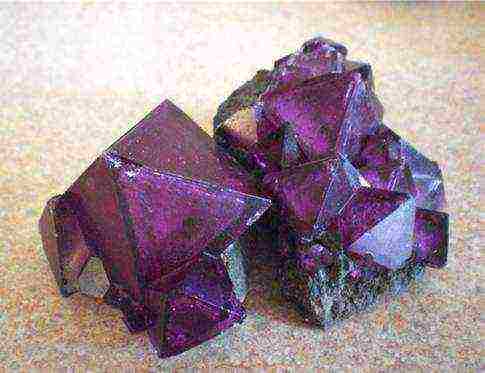
If you are just starting to learn how to grow a crystal at home, it is better to postpone using them.
However, many work mixes, such as table salt, can be found in any home. It is with them that beginners are recommended to start work.
Salt
There is nothing easier than growing salt crystals at home!
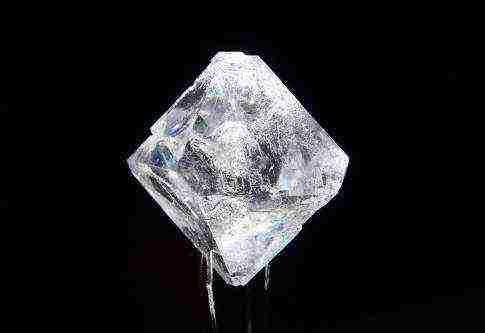
You do not need to use any special accessories or equip a work place with supernatural conditions to operate this product.
Copper sulfate
Another easy option. Before growing a copper sulphate crystal, the substance can be bought at an amateur gardener's store - it is sold as a fertilizer.

From the master classes below, you will understand that working with vitriol is as easy as growing a crystal from salt. The only difference is that the mixture is an active saturated saline substance, therefore it is undesirable to carry out experiments using running water or any other water - only distilled water is suitable, which you can find in the pharmacy.
Sugar
The only substance that can be eaten after the experiment! Experiments with sugar are completely harmless, so you can safely teach children how to grow a crystal by his example.
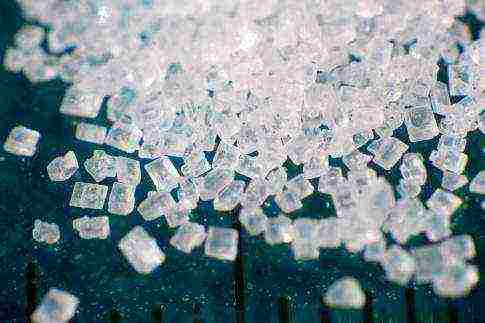
As a result, you should get delicious sugar candies in the form of frosty crystals - an original replacement for cockerels on a stick.
Safety regulations
Despite the fact that novice chemists use mainly familiar solutions, such as salt or sugar, everyone must follow certain precautions - the instructions are presented below.
- Allocate special dishes for the experiments, from which you will not eat in the future. Failure to do so can lead to serious food poisoning.
- Each substance must be stored in a separate, hermetically sealed package with the mandatory signature of the contents on the bottle. Keep substances out of reach of children and pets, in a cool and dark place.
- Use protective clothing and gloves.
- Work with chemicals that emit vapors into the air should be carried out only near powerful hoods.
- If acid gets on the skin, it is imperative to sprinkle the place with a weak alkali (water diluted with baking soda) and vice versa - alkaline solutions can be easily neutralized with an acid like citric acid.
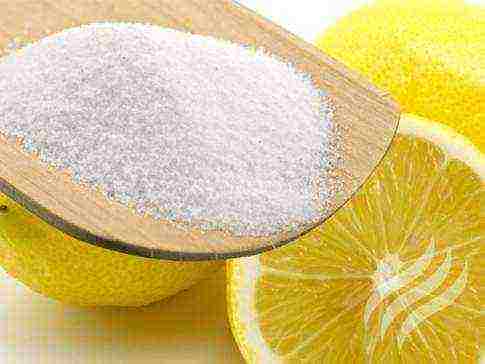
Such skills are very useful when working with hazardous chemicals. Over time, you will bring the implementation of this instruction to automaticity and you will not be able to worry when you want to use dangerous mixtures instead of ordinary salt or soda to grow a crystal.
Salt crystals at home
After the theoretical advice, you can move on to the part where you will learn how to grow a crystal from salt. Prepare water in unlimited quantities - it is better to use distilled (purified from any additives) so that the substance does not react with any impurities. However, regular running water will do as well.
In addition, you will need a small saucepan, a glass container (jar, glass), silk thread, and a pack of salt.
- Place a saucepan of water over medium heat. Heat the water, but do not bring it to a boil.
- Start adding salt to the water in small portions, stirring constantly. Pour in a new handful each time after completely dissolving the previous one.
- The preparation of the solution ends when the salt has completely ceased to dissolve in water - this means that you have prepared a concentrated mixture.
- Pour the concentrated composition into a transparent glass container and leave to settle for about a day.
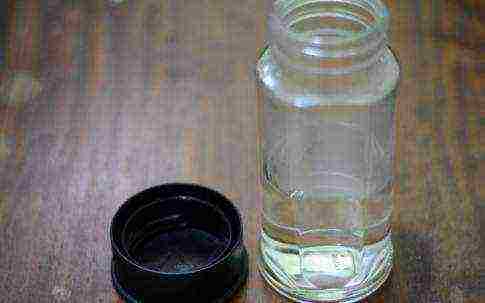
- Free time is necessary for all the smallest, undissolved particles to settle to the bottom. In the photo you can see how the salt sludge is obtained.

- Take a string or string and tie it around a long thin stick that you can put on the neck of a glass container.
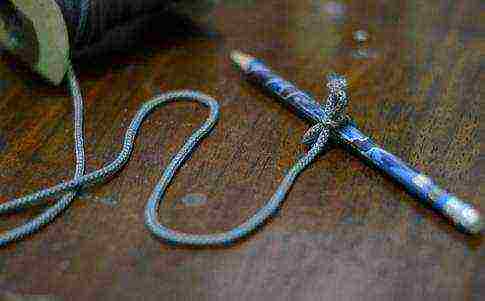
- The length of the lace should be less than the height of the vessel, so cut off the excess.
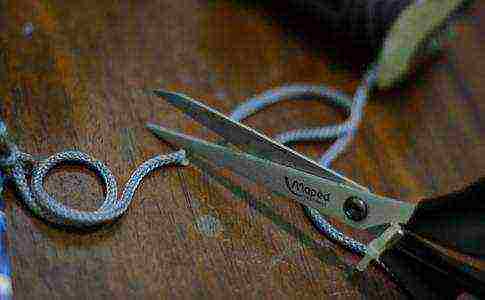
- Dip the string into the water while hanging so that it does not touch the walls of the can and the sediment at the bottom.

- Leave the experiment in this state for 1-3 weeks.

- After a couple of days, you will notice the growth of small crystals on the thread. The experiment in this case is interesting just by observing how much the crystal grows over a certain period of time.
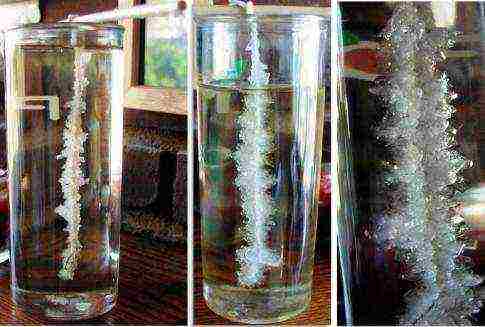
- Instead of using ordinary string, you can dip a large piece of salt suspended on a string into the glass. In this case, the substance will grow around it.
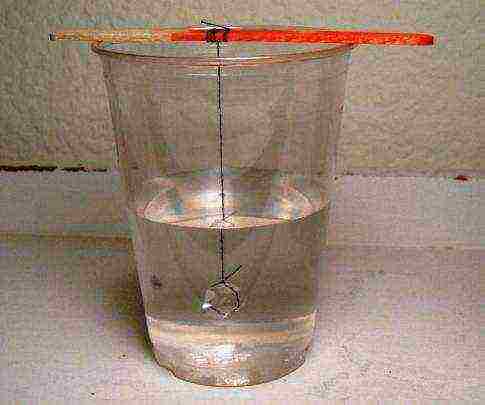
You can grow a crystal of a certain shape or arbitrary. To control the appearance of the substance, apply a thin layer of fat or petroleum jelly on one side of the crystal - you will see that there will be no growth here.
If desired, salt can be replaced with other substances - for example, using the same technology, it is easy to prepare crystals from soda or copper sulfate.
How to grow a crystal from sugar?
If you have set yourself the goal of learning how to grow a crystal from sugar, you will be pleasantly surprised by the result - beautiful sweet lollipops that will delight children and pleasantly surprise adults during tea drinking. An interesting way to use them is to stir tea with them. This gives you both a stirring stick and sugar sweetener.

- Prepare a concentrated sugar solution in the same way as in the experiment with salt - the sugar should completely stop dissolving in warm water. Then pour the hot syrup into a transparent bowl.
- When the solution is ready, prepare the base sticks. Tie one stick to another crosswise so that the first is lowered into the vessel, and the other is holding on to its neck.
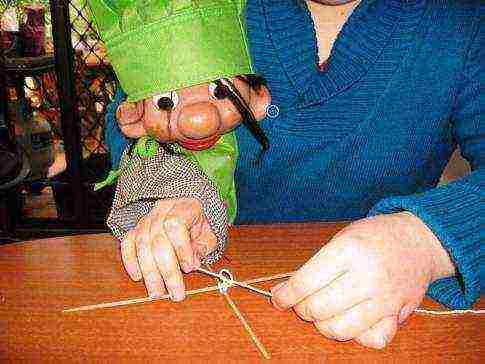
- Dip the stick in the syrup - it shouldn't touch the bottom.

- Leave the structure in a dry and warm place - you will notice in a day how crystals begin to appear in the liquid.

- After about a week, you will have finished sugar skewers. Bon Appetit!

If you want a colored lollipop, add a little food coloring to each jar as you pour the hot syrup.
Such sweets can be a pleasant gift for loved ones for the holidays - such sweet sticks can be supplemented with a present for the New Year or Birthday.
To find out how to grow a crystal from copper sulfate, watch the following video.

